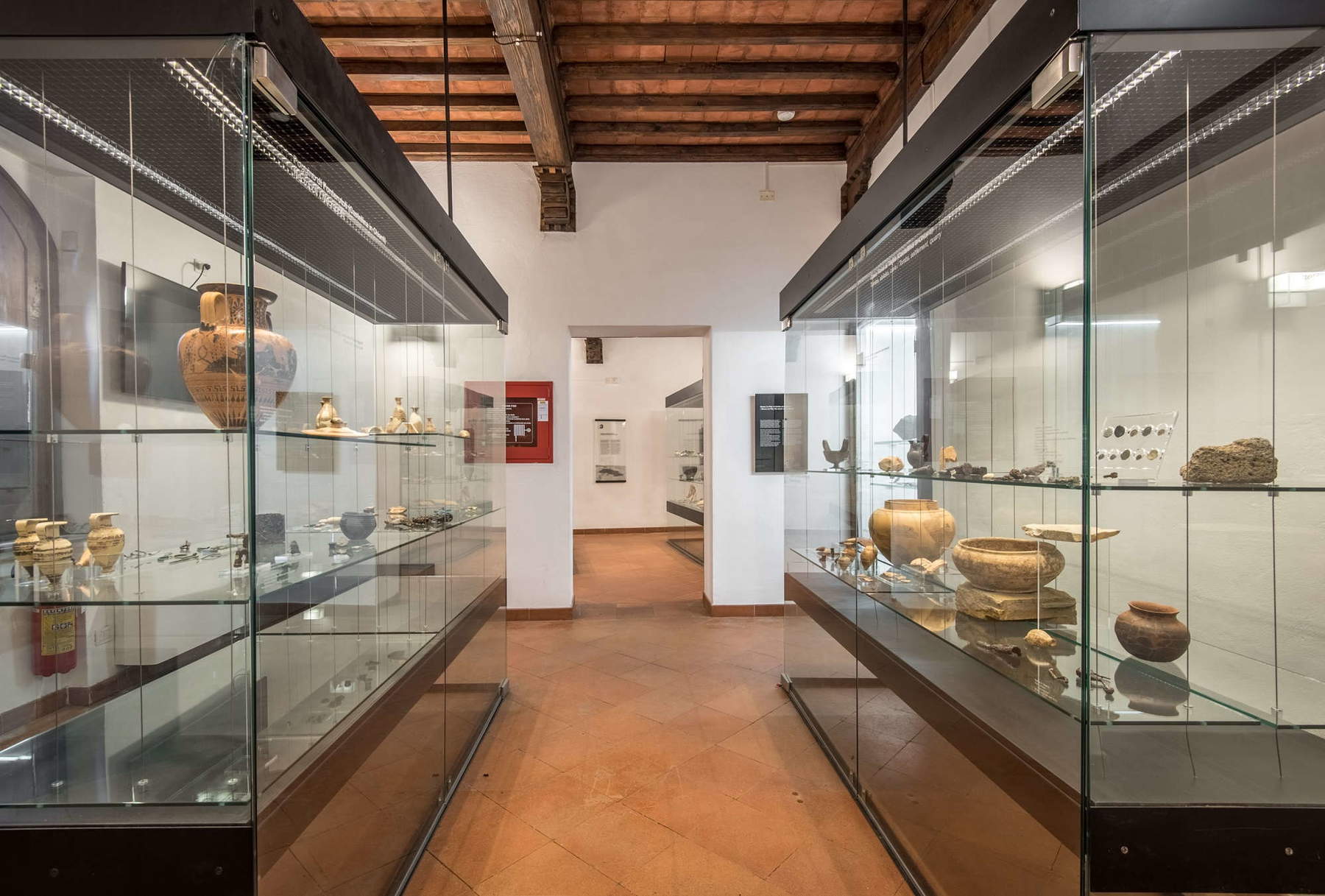Castellina in Chianti is hosting until Jan. 6, 2026, in the rooms of the Archaeological Museum of Chianti, the exhibition Archaeology Saved: the First Etruscans at Fonterutoli, an itinerary that returns to the public extraordinarily valuable finds recovered from a clandestine excavation. The exhibition inaugurated the Progetto Etruschi 85/25 program, promoted by the Region of Tuscany forty years after the first initiative in 1985, which marked a turning point in the way Etruscan archaeology was communicated and experienced.
The official opening was preceded last June by a lecture by journalist and writer Fabio Isman, a leading expert on the illicit trafficking of works of art. Under the title L’arte e l’archeologia razziate, Isman brought to Castellina a documented account of investigations and battles conducted to denounce the looting of Italy’s cultural heritage, thus introducing the underlying theme of the exhibition: the recovery of stolen goods and the defense of the collective right to historical memory.
The centerpiece of the exhibition is more than 130 bronze artifacts stolen from illegal excavations near Fonterutoli (hamlet of Castellina in Chianti, province of Siena), recovered thanks to the collaboration between volunteers, institutions and law enforcement agencies. In late 2024, the Salingolpe Archaeological Group, an association that has been active in the area for decades, reported signs of clandestine intervention. The alarm allowed the immediate intervention of the Carabinieri for the Protection of Cultural Heritage in Florence and the Archaeological Superintendence of Siena, who managed to stop the dispersion of the materials on the black market.

Subsequent survey work, conducted with the help of the University of Siena and the collaboration of the Mazzei family, owners of the land, revealed the existence of a hitherto unknown necropolis, datable to between the late 8th and early 7th centuries B.C. Two intact tombs, one male and one female, yielded fibulae, ornaments and objects of use documenting funerary rituals and craftsmanship skills from a time when Chianti was already closely linked to Volterra, a major Etruscan center.
The operation represents an exemplary case of “saved archaeology”: not only the return of artifacts to the community, but also a demonstration of the value of shared protection, made possible by the joint efforts of citizens, local authorities and national authorities. The Castellina exhibition stages this story, making visible the collective work that made it possible to transform an attempted depredation into an opportunity for knowledge.
The Archaeological Museum of Chianti, which for years has been a point of reference for the enhancement of local heritage, thus assumes a central role in the new course initiated by the Region of Tuscany. With the Etruscan Project 85/25, the Region intends to relaunch at the regional level a season of events, workshops and digital tools that will take Etruscan civilization outside academic venues alone, consolidating the legacy of the program inaugurated in 1985. Back then, the goal was to “take the Etruscans out of the rooms of scholars,” transforming archaeology into an element of contemporary identity and creativity. Today, forty years later, the perspective is renewed with a participatory approach that focuses on collaboration between museums, schools, associations and citizens.
Castellina, with the exhibition on the Fonterutoli artifacts, becomes one of the symbolic outposts of this project. The exhibition does not simply display objects, but proposes an integrated narrative that combines the history of recovery with the new frontiers of digital communication. Through educational workshops, lectures and narrative paths available on the regional culture portal, the public will be able to explore the links between the Chianti region and Etruscan civilization, rediscovering a past that continues to speak to the present.
 |
| Archaeology rescued: Etruscan artifacts recovered from clandestine excavations on display in Chianti |
Warning: the translation into English of the original Italian article was created using automatic tools. We undertake to review all articles, but we do not guarantee the total absence of inaccuracies in the translation due to the program. You can find the original by clicking on the ITA button. If you find any mistake,please contact us.